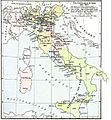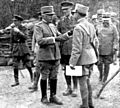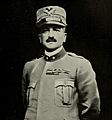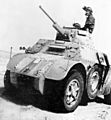Kingdom of Italy (1861–1946) facts for kids
Quick facts for kids
Kingdom of Italy
|
|
|---|---|
| 1861–1946 | |

Kingdom of Italy in 1936
|
|
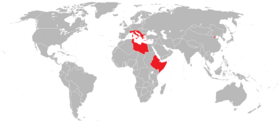
Maximum extent of the Italian Empire
|
|
| Capital | |
| Religion | Roman Catholicism Protestantism Judaism |
| Government |
|
| King | |
|
• 1861–1878
|
Victor Emmanuel II |
|
• 1878–1900
|
Umberto I |
|
• 1900–1946
|
Victor Emmanuel III |
| Prime Minister | |
|
• 1861
|
Count of Cavour (first) |
|
• 1922–1943
|
Benito Mussolini (Il Duce from 1925) |
|
• 1945–1946
|
Alcide De Gasperi (last) |
| Legislature | Parliament |
| Senate | |
| Chamber of Deputies | |
| History | |
| 17 March 1861 | |
|
• March on Rome
|
31 October 1922 |
|
• Fall of the Fascist regime
|
25 July 1943 |
|
• Republic established
|
2 June 1946 |
| ISO 3166 code | IT |
The Kingdom of Italy was a state which existed from 1861—when King Victor Emmanuel II of Sardinia was proclaimed King of Italy—until 1946—when civil discontent led an institutional referendum to abandon the monarchy and form the modern Italian Republic. The state was founded as a result of the unification of Italy under the influence of the Kingdom of Sardinia, which can be considered its legal predecessor state.
Italy declared war on Austria in alliance with Prussia in 1866 and received the region of Veneto following their victory. Italian troops entered Rome in 1870, thereby ending more than one thousand years of Papal temporal power.
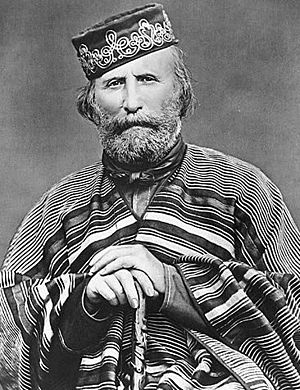
Italy entered into a Triple Alliance with Germany and Austria-Hungary in 1882, following strong disagreements with France about the respective colonial expansions. However, even if relations with Berlin became very friendly, the alliance with Vienna remained purely formal as the Italians were keen to acquire Trentino and Trieste, corners of Austria-Hungary populated by Italians.
So in 1915, Italy accepted the British invitation to join the Allied Powers, as the western powers promised territorial compensation (at the expense of Austria-Hungary) for participation that was more generous than Vienna's offer in exchange for Italian neutrality. Victory in the war gave Italy a permanent seat in the Council of the League of Nations.
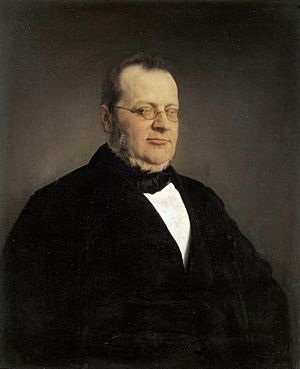
"Fascist Italy" is the era of National Fascist Party government from 1922 to 1943 with Benito Mussolini as head of government. The fascists imposed totalitarian rule and crushed the political and intellectual opposition, while promoting economic modernization, traditional social values and a rapprochement with the Roman Catholic Church.
Italy was an important member of the Axis powers in World War II, battling on several fronts with initial success. However, after the German-Italian defeat in Africa and Soviet Union and the subsequent Allied landings in Sicily, King Victor Emmanuel III placed Mussolini under arrest, and the Fascist Party in areas controlled by the Allied invaders was shut down. The new government signed an armistice on September 1943.
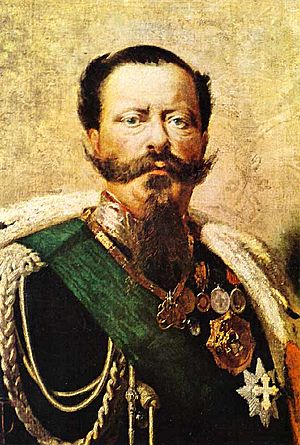
German forces immediately occupied northern Italy with Fascists' help, setting up the Italian Social Republic, a collaborationist puppet state still led by Mussolini and his Fascist loyalists. As a consequence, the country descended into civil war, with the Italian Co-belligerent Army and the resistance movement contended the Social Republic's forces and its German allies.
Much like Japan and Germany, the aftermath of World War II left Italy with a destroyed economy, a divided society and anger against the monarchy for its endorsement of the Fascist regime for the previous twenty years.
Shortly after the war and the liberation of the country, civil discontent led to the institutional referendum on whether Italy would remain a monarchy or become a republic. Italians decided to abandon the monarchy and form the Italian Republic, the present-day Italian state.
Italian society after unification and throughout most of the Liberal Period was sharply divided along class, linguistic, regional and social lines. The North-South divide is still present to this day.
Images for kids
-
Italian unification between 1815 and 1870
-
Count Camillo Benso of Cavour, the first Prime Minister of the unified Italy
-
Victor Emmanuel II, the first King of the united Italy
-
Crown of the Kingdom of Italy
-
A factory machinery exposition in Turin, set in 1898, during the period of early industrialization, National Exhibition of Turin, 1898
-
A 1899 FIAT advertisement
-
Galleria Vittorio Emanuele II in Milano was an architectural work created by Giuseppe Mengoni between 1865 and 1877 and named after the first King of Italy, Victor Emmanuel II.
-
The Triple Alliance in 1913, shown in red
-
Francesco Crispi promoted the Italian colonialism in Africa in the late 19th century.
-
Italian mounted infantry in China during the Boxer Rebellion in 1900
-
Giovanni Giolitti was Prime Minister of Italy five times between 1892 and 1921.
-
Italy and its colonial possessions at the time of the outbreak of World War I: the area between British Egypt and the firmly held Italian territories is the region of southern Cyrenaica which was under dispute of ownership between Italy and the United Kingdom.
-
Gabriele D'Annunzio, national poet (vate) of Italy and a prominent nationalist revolutionary who was a supporter of Italy joining action in World War I
-
Generalissimo Luigi Cadorna (the man to the left of two officers to whom he is speaking) while visiting British batteries during World War I
-
Members of the Arditi corps in 1918. More than 650,000 Italian soldiers lost their lives on the battlefields of World War I.
-
Armando Diaz, Chief of Staff of the Italian Army since November 1917, halted the Austro-Hungarian advance along the Piave River and launched counter-offensives which led to a decisive victory on the Italian Front. He is celebrated as one of the greatest generals of World War I.
-
Italian Prime Minister Vittorio Emanuele Orlando (2nd from left) at the World War I peace negotiations in Versailles with David Lloyd George, Georges Clemenceau and Woodrow Wilson (from left)
-
Residents of Fiume cheering D'Annunzio and his Legionari in September 1919, when Fiume had 22,488 (62% of the population) Italians in a total population of 35,839 inhabitants
-
Benito Mussolini (second from left) and his Fascist Blackshirts in 1920
-
Erwin Rommel meeting Italian General Italo Gariboldi in Tripoli, February 1941
-
The Italian Army in Russia fought on the Eastern Front.
-
Three men executed by public hanging in a street of Rimini, 1944
-
Members of the Italian resistance in Ossola, 1944
-
Umberto II, the last king of Italy
See also
 In Spanish: Reino de Italia (1861-1946) para niños
In Spanish: Reino de Italia (1861-1946) para niños





